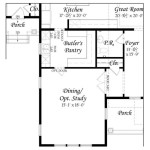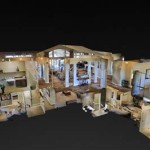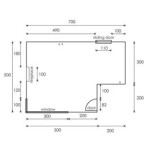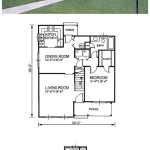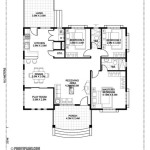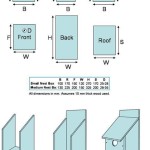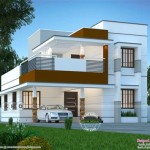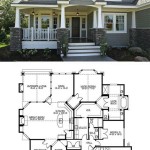Simple 5 Bedroom House Plans In Kenya
The demand for spacious family homes in Kenya continues to rise, driven by factors such as growing families and the desire for comfortable living spaces. A 5-bedroom house is increasingly becoming a preferred choice for many Kenyan families, offering ample room for residents and potential guests. This article explores simple 5-bedroom house plans suitable for Kenyan contexts, considering functionality, affordability, and cultural relevance.
Designing a 5-bedroom house requires careful planning to optimize space utilization and ensure a comfortable living environment. In Kenya, particular attention must be paid to factors such as climate, local building materials, and cultural preferences. A simple design, focusing on clean lines and efficient layouts, is often the most practical and cost-effective approach. Simplicity doesn't equate to lack of style; rather, it prioritizes functionality and ease of construction, which are key considerations for many homeowners in Kenya.
Before delving into specific plan examples, it's essential to understand the fundamental components of a well-designed 5-bedroom house. These include the bedrooms themselves, living areas (such as the lounge and dining room), kitchen, bathrooms, and potentially other spaces like a study, family room, or outdoor areas. The arrangement of these components must be carefully considered to ensure smooth flow, privacy where needed, and accessibility for all occupants.
Key Point 1: Considerations for Floor Plan Layout
The layout of a 5-bedroom house plan is crucial for functionality and comfort. Several layout options can be considered, each with its own advantages and disadvantages. The choice will largely depend on the size and shape of the plot, the homeowner's preferences, and budget constraints.
One common approach is to separate the bedroom wing from the living areas. This can be achieved by placing the bedrooms on one side of the house and the living areas on the other side, creating a buffer zone for noise reduction and increased privacy. Central corridors can connect the various sections of the house, providing easy access to all rooms.
Another option is to arrange the bedrooms around a central living area. This design can promote a sense of togetherness and facilitate interaction between family members. However, it may also compromise privacy if not carefully planned. The kitchen should ideally be located near the dining area for convenient meal service.
For larger plots, a sprawling single-story design may be feasible. This can eliminate the need for stairs, making the house more accessible for elderly or disabled residents. However, single-story houses typically require a larger footprint and may be more expensive to build due to the increased foundation and roofing costs.
Alternatively, a two-story design can maximize the use of a smaller plot. The bedrooms are often located on the upper floor for increased privacy, while the living areas are situated on the ground floor. Careful consideration must be given to the placement of the staircase to ensure easy access to both floors.
In any layout, it is important to consider the orientation of the house in relation to the sun. Strategically placing windows and doors can maximize natural light and ventilation, reducing the need for artificial lighting and cooling. In Kenya's warm climate, shading devices such as eaves and verandas are essential for protecting the house from direct sunlight.
Furthermore, it is advisable to incorporate outdoor living spaces such as verandas or patios. These spaces can provide a comfortable area for relaxation and entertainment, extending the living area and enhancing the overall quality of life.
Accessibility for people with disabilities should also be considered during the planning stage. This may involve incorporating features such as ramps, wider doorways, and accessible bathrooms. While not always mandatory, designing for accessibility promotes inclusivity and enhances the value of the property.
Key Point 2: Material Selection and Cost Considerations
The choice of building materials significantly impacts the cost and durability of the house. In Kenya, a range of materials is available, each with its own advantages and disadvantages. Locally sourced materials such as stone, bricks, and timber are often preferred due to their affordability and availability.
Stone is a durable and aesthetically pleasing material that can provide excellent insulation. However, it can be relatively expensive and labor-intensive to work with. Bricks are a more affordable option and offer good thermal mass, helping to regulate indoor temperatures. Timber is a versatile material that can be used for framing, cladding, and roofing. However, it requires treatment to protect it from pests and decay.
Concrete is another widely used material in Kenyan construction. It is strong, durable, and relatively affordable. Concrete is typically used for foundations, floors, and walls. However, it can be prone to cracking if not properly mixed and cured.
The choice of roofing material is also important. Corrugated iron sheets are a common and affordable option. However, they can be noisy during rainfall and may not provide adequate insulation. Tiles are a more expensive option but offer better insulation and a more aesthetically pleasing appearance.
When selecting materials, it is important to consider their environmental impact. Sustainable materials such as bamboo, recycled plastics, and locally sourced timber can reduce the carbon footprint of the house. Energy-efficient windows and doors can also help to reduce energy consumption.
Cost considerations are paramount for many homeowners in Kenya. It is important to obtain accurate cost estimates from reputable contractors before starting construction. These estimates should include the cost of materials, labor, and permits. A contingency fund should also be set aside to cover unexpected expenses.
To minimize costs, it is advisable to opt for a simple design with minimal ornamentation. Complex designs often require more materials and labor, increasing the overall cost. Standard sizes of materials should be used whenever possible to avoid wastage.
Phased construction can also help to spread out the cost of building over time. This involves completing the house in stages, starting with the essential components such as the foundation, walls, and roof. The remaining components can be added later as funds become available.
Key Point 3: Adapting Designs to the Kenyan Context
Designing a 5-bedroom house in Kenya requires consideration of local climatic conditions and cultural preferences. Kenya's tropical climate necessitates features such as adequate ventilation, shading devices, and rainwater harvesting systems.
Natural ventilation is crucial for maintaining comfortable indoor temperatures. This can be achieved through the strategic placement of windows and doors, as well as the use of ventilation openings in the roof. High ceilings can also promote air circulation.
Shading devices such as eaves, verandas, and trees can help to protect the house from direct sunlight, reducing the need for air conditioning. Verandas also provide a comfortable outdoor living space that can be enjoyed year-round.
Rainwater harvesting is a sustainable practice that can provide a reliable source of water for domestic use. Rainwater can be collected from the roof and stored in tanks. The water can then be used for irrigation, washing, and toilet flushing.
Cultural preferences also play a significant role in house design. Many Kenyan families prefer to have a separate kitchen and dining area. A designated prayer room or space may also be required. The size and layout of the living areas should be appropriate for entertaining guests.
Security considerations are also important in Kenya. Houses should be designed to be secure from intruders. This may involve incorporating features such as perimeter walls, reinforced doors and windows, and security lighting. A gatehouse or guard post may also be necessary in some areas.
The availability of utilities such as water, electricity, and sewage disposal should also be considered. If mains water is not available, a borehole or well may be necessary. If mains electricity is not available, a solar power system or generator may be required. Septic tanks are commonly used for sewage disposal in areas without access to a sewer system.
Landscaping is an important aspect of house design in Kenya. Plants can provide shade, improve air quality, and enhance the aesthetic appeal of the property. Native plants are often preferred due to their adaptability and low maintenance requirements.
Ultimately, a simple 5-bedroom house plan in Kenya should be functional, affordable, and culturally relevant. By carefully considering the layout, materials, and local conditions, it is possible to create a comfortable and sustainable living environment for Kenyan families.

10 Inspiring 5 Bedroom House Plans Designs And Layouts To Co Ke

10 Inspiring 5 Bedroom House Plans Designs And Layouts To Co Ke

5 Bedroom House Designs In Kenya Hpd Consult Building Plans Design

5 Bedroom Maisonette House Plans In Kenya Designs For

Five Bedroom House Plans In Kenya West Real Estate

10 Inspiring 5 Bedroom House Plans Designs And Layouts To Co Ke

New House Design 5 Bedroom On 50ft By 100ft Ruiru Archabitive Construction Ahc Designs

4 Excellent House Designs In Kenya And Cost Of Building Marble Engineering Construction Co Ltd

Best House Designs On 50x100 In Kenya Simple And Spacious Plans

10 Inspiring 5 Bedroom House Plans Designs And Layouts To Co Ke
Related Posts

